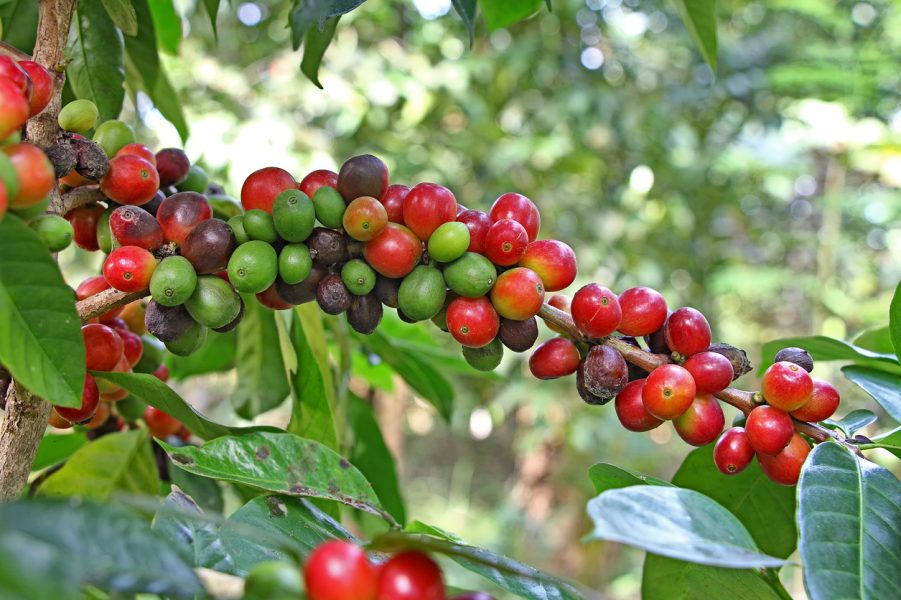
How prolonged rain in Karnataka is ruining your favourite brew

In Karnataka’s coffee plantation districts in the western ghats, there’s a sense of gloom despite high coffee prices globally, thanks to the prolonged spell of rain that threatens to ruin what initially started off as a good year for the crop.
November is usually when coffee-picking begins in the hilly tracts of Chikmagalur and Coorg but the rain has been unrelenting so far, as the southwest monsoon stretched through October, segueing into the retreating monsoon that began in November.
As a result, the higher-priced Arabica crop, which ripens about a month-and-a-half earlier than the Robusta variety, has been hit hard with the cherries already falling to the ground and rotting, planters say.
“Even if we harvest it, we are not able to dry it,” says N Bose Mandanna, a planter from Suntikoppa in Coorg. Coffee cherries are normally sun-dried on patios in a drying yard but this year, the desperate measures being considered by planters to salvage the situation include drying by wood-fire, investing in dryers or setting up polyhouses, he adds.
Also read: It’s blankets and black coffee time in Bengaluru as temperatures drop
Karnataka accounts for 70 per cent of India’s coffee crop which was estimated at 3.34 lakh metric tonnes for the year 2020-21 – of this, Arabica accounts for 99,000 metric tonnes and Robusta about 2.35 lakh metric tonnes. The post-blossom estimate for the current year (2021-22) is about 3.69 lakh tonnes, which is higher than previous years.
“With this heavy rain, we foresee about 30 per cent drop in the estimates for Arabica,” says S Appadurai, chairman of Karnataka Planters’ Association (KPA). With a forecast of rain for the next few days, the concerns remain.
The Robusta crop will be due for harvesting next month but there are complaints from some pockets of the fruit getting affected, he explains. “The main thing is sunlight also is not coming through, which will cause a lot of fungus. It’s harmful for pepper also,” says Appadurai.
Since June, Arabica prices are at a high – around ₹13,000 for a 50 kg bag of parchment (unhulled coffee beans) compared to last year’s top price of ₹10,000. Global prices are up because Brazil, the biggest producer of coffee, is hit by frost. “Prices are at a five-year-high but we may not be able to take advantage of that,” says Appadurai.
Meanwhile, Robusta prices are around ₹6,000 a bag, more or less the same price as last year. The Robusta variety is typically suited to lower altitudes – it is less labour-intensive compared to Arabica which is also vulnerable to pests such as white stem borer. Hence, more planters have shifted to growing Robusta over the years. Currently, Robusta accounts for about 70 per cent of India’s annual coffee production.
India is the world’s seventh largest producer of coffee. About 76 per cent of the coffee produced in India is exported, with Italy, Germany and Russia among the top destinations.
According to the KPA, coffee growers have been grappling with adverse climatic conditions for the past few years even as input costs are rising. There was record rain in 2018 followed by another wet year in 2019. While last year was fairly ideal in terms of sunshine and rain, a shortage of labour because of the pandemic meant that the entire crop could not be harvested.
The KPA this week urged the government to reschedule coffee growers’ loans with a repayment moratorium of seven years and to issue directions to banks to refrain from taking action against defaulting owners under the SARFAESI Act and auctioning their estates.
Industry experts say that even as global coffee prices have gone up, rising freight rates would eat into actual earnings.
“For a short period, people did feel that they are going to get a good crop,” says Ramesh P Rajah, president of the Coffee Exporters Association. “Even with all the other factors of high logistics and everything, at least you would get 30 per cent more. So, the silver lining was there. And then you had these totally adverse weather conditions.”
“Here was a good chance for us to sell, and repay loans. But that opportunity has gone because of the weather and the rains,” says Bose Mandanna.
Also read: No relief from rain for Bengaluru & coastal Karnataka till November 16
Normally, the monsoon would taper off by the first week of September, he adds. “We used to get our heaviest rains in July and August, then we started working in September on fertiliser application and our pest and disease control. This year, the rain has continued.”
The average annual rainfall in his region is about 60 inches but he has recorded 96 inches so far. “And, there is some more to go now. We are finding it very difficult to harvest and to keep the harvested coffee in good condition,” says Mandanna. “While coffee growers have weathered bad years in the past, it’s now been a sustained run over the past few years.”
“Earlier, there was always a boom-bust type of scenario and coffee being a perennial crop, you could withstand it because one year you got a good price and the next you got a bad price, so you could average out,” says Rajah. “Unfortunately, now the booms have been very limited and the busts have been sustained. So even prudent borrowers have started finding it difficult because costs keep increasing.”


